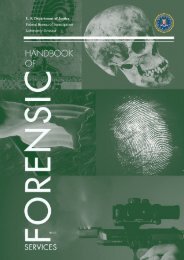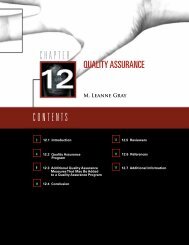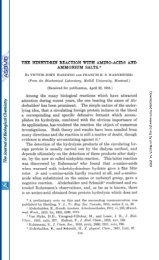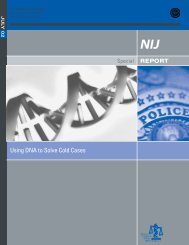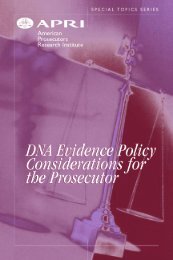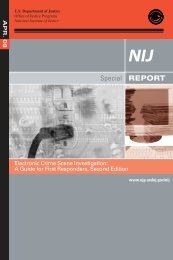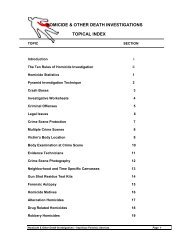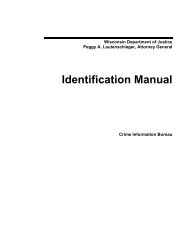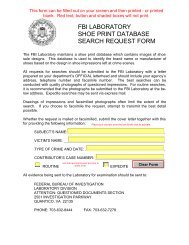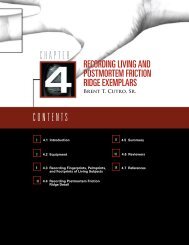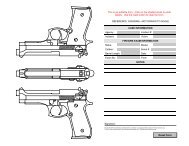Mass Fatality Incidents: A Guide for Forensic Identification
Mass Fatality Incidents: A Guide for Forensic Identification
Mass Fatality Incidents: A Guide for Forensic Identification
- No tags were found...
Create successful ePaper yourself
Turn your PDF publications into a flip-book with our unique Google optimized e-Paper software.
Appendix D. Procedures <strong>for</strong> DNASample CollectionThe DNA sample team works in pairs:a recorder and a sampler. The recorderescorts the remains to the worktable.Both team members verify (or establish)unique identifiers and mutually acknowledgea site <strong>for</strong> sampling (if a decision ismade not to sample the remains, therecorder notes that in the DNA RemainsTracking Log).The recorder enters the number, date,time, and description into a database orlog and labels the specimen container(e.g., tube, bag, etc.) appropriately.Using the appropriate instruments, thesampler obtains one of the following, listedin order of preference:■ 10–15 g of deep skeletal muscle (avoidtissues that may have been crushedtogether by incident impact or blast<strong>for</strong>ces).■ 1–2 cm x 4–6 cm x 0.5–1 cm of corticalbone (avoid anthropological landmarks,articular margins, and fresh-broken marginswhenever possible; cut windows inlong bones and crania).■ Upper or lower canine or other intacttooth without restorations (consult anodontologist if required).■ Other portion of soft or hard tissue thatfits into a 50 ml conical tube.The recorder and sampler verify the placementof the sample in a properly labeledtube and the entry of the correspondingdata in a sample log. The sampler disposesof the bench coat, scalpel blades, androtary bits. The sampler cleans the cuttingsurface, scale, Stryker saw, rotary instrument,<strong>for</strong>ceps, gloves, and hemostatswith a 10-percent bleach solution, thenwipes all surfaces down with ethanol.The medical examiner/coroner is expectedto provide guidance to the DNA sampleteam regarding tissue samples that arelikely to be exhausted during testing.If multiple, potentially unassociated remainsare in a single recovery container,the recorder or sampler is expected to separatelybag the remains from which thesample was taken. Later, when DNA resultsare obtained, the medical examiner/coroner is expected to be able to return tothat recovery container and attribute thatprofile to a specific tissue specimen withcertainty.The chain of custody is expected to list allsamples sent to the laboratory facility. Onsigning the chain of custody, the medicalexaminer/coroner is also expected to decidewhether to return any remaining softtissue or osseous sample after testing iscompleted. Because single, recoveredteeth are submitted whole, consider howto return them after testing is completed.61




